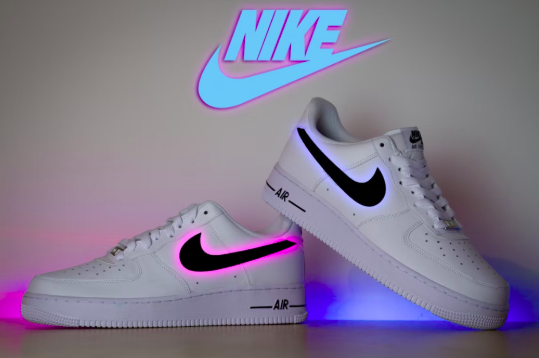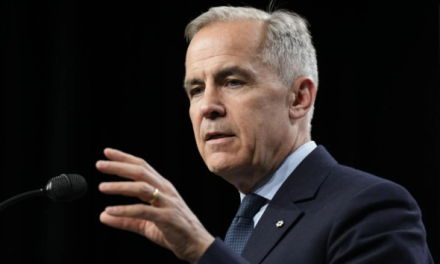Nike, the world’s largest athletic footwear and apparel brand, recently announced that it expects to lose approximately $1 billion due to tariffs implemented during Donald Trump’s administration. These tariffs, primarily targeting imports from China and other parts of Asia, are now cutting deep into Nike’s profits. The company responded by increasing prices and shifting production, but consumers around the world, including in Canada, are starting to feel the consequences.
While the tariffs were part of a U.S. trade strategy, they’ve had ripple effects across borders. In Canada, this news has triggered not just concern about price hikes, but also a renewed interest in domestic manufacturing, buy-local movements, and even economic nationalism. A look at Google Trends in Canada shows a sharp rise in search terms like “Trump tariffs Canada,” “Buy Canadian,” and “Boycott USA.”
This blog explores what Nike’s billion-dollar tariff bill means for Canadians, what trends we’re seeing in search behaviour, and how the country is responding with a strong, values-based consumer shift.
Nike’s Tariff Trouble: The Breakdown
The tariffs affecting Nike are part of ongoing U.S. trade tensions with China, which began during Donald Trump’s first term and have lingered under subsequent administrations. Nike has long relied on countries like China, Vietnam, and Indonesia for the bulk of its footwear production. With the U.S. government imposing tariffs as high as 25% on certain imports, companies like Nike are suddenly forced to either absorb the costs or pass them along to consumers.
Nike CFO Matt Friend explained that the company plans to mitigate the impact through surgical price increases on high-demand products, cost cuts, and a gradual shift in production out of China. The company’s target is to reduce its reliance on Chinese manufacturing from 16% to single digits by 2026.
For consumers, this means higher prices on sneakers, athletic gear, and casual wear, especially in the $100–$150 range, which includes many of Nike’s bestsellers.
What This Means for Canadian Consumers
Canadians have long paid more than Americans for similar products, thanks to import duties, currency exchange, and distribution costs. The added layer of U.S.-imposed tariffs makes this even worse.
Even though the tariffs are U.S.-based, global brands tend to harmonize pricing, especially in neighboring markets. That means Canadians will likely see:
- Price hikes on footwear and apparel
- Fewer sales and promotions on imported American goods
- Greater emphasis on premium product lines over budget-friendly options
For Canadian families, especially those with teens and young adults who often gravitate toward popular Nike styles, this could mean either higher spending or switching brands entirely.
Google Trends: How Canadians Are Responding
Google Trends paints a fascinating picture of public sentiment in Canada. Over the past six months, there has been a noticeable increase in search volume for:
- “Trump tariffs Canada”
- “Buy Canadian sneakers.”
- “Made in Canada shoes”
- “Boycott USA products.”
- “MapleScan app” (a Canadian app for checking product origin)
These trends reflect a growing frustration with reliance on American goods and policies. According to Google’s regional interest breakdown, Canada ranks among the top countries interested in news related to U.S. tariffs and trade policies, even more so than some U.S. states.
This surge in interest aligns with a cultural shift that’s been quietly building since the early 2020s: Canadians want more control over what they buy, where it comes from, and how it aligns with their values.
Buy Canadian: A Growing Movement
In response to tariff-related price hikes and broader economic nationalism, the “Buy Canadian” movement is accelerating across provinces. Here’s what’s happening on the ground:
- Retail Shifts: Several provincial liquor boards, including Ontario’s LCBO, have delisted American wines and spirits in favour of Canadian products.
- Mobile Apps: Apps like MapleScan and BuyBeaver are seeing record downloads. These platforms allow users to scan product barcodes and instantly see whether an item is Canadian-made.
- Retail Tagging: Many local shops are now labelling products with Canadian flags or “Made in Canada” tags to make the decision easier for shoppers.
- Community Campaigns: On Reddit and Facebook, discussions around “Boycott USA” and “Support Canadian Brands” have surged. Users are sharing lists of Canadian clothing, footwear, and outdoor gear brands as alternatives to Nike, Levi’s, and other U.S. staples.
- Consumer Surveys: A recent Angus Reid poll found that 91% of Canadians support buying Canadian-made goods even if it means paying a bit more.
Tariffs on the Horizon: Canada’s Deadline Looms
The impact of trade policies doesn’t stop at Nike. In a recent development, Canada has given the U.S. a 30-day deadline to lift new tariffs or face retaliatory measures of its own. This deadline, set by Canadian Trade Minister Mark Carney, could mark a major turning point in U.S.–Canada trade relations. You can read more about that in our full coverage: Canada’s 30-day tariff ultimatum.
This escalating situation only adds more urgency to Canada’s push toward domestic sourcing and tariff-free trade within its borders.
Short-Term Challenges, Long-Term Gains
While Canadians may grumble about higher prices in the short term, the long-term effects could be beneficial for the domestic economy:
- Local job creation in the textile, design, and manufacturing sectors
- Growth of Canadian startups in the athletic and casual wear market
- Increased innovation driven by consumer loyalty and eco-conscious values
Companies like Vessi, Native Shoes, and Roots are already benefiting from this wave of localism. Not only are they gaining visibility, but many consumers are also finding that these Canadian brands offer comparable quality to global giants like Nike, often with better sustainability practices and customer service.
Smart Shopping in a Tariff-Driven Economy
Some Canadian retailers are already adapting. For example, Costco has reintroduced early shopping hours for Executive members, helping consumers avoid crowds and shop more efficiently. In a time when prices are rising and selection is fluctuating, strategies like these are becoming more attractive. See the full story here: Costco reintroduces early shopping hours for Executive Members.
Conclusion: A Turning Point for Canadian Shoppers
Nike’s $1 billion tariff burden is more than a line in an earnings report—it’s an awakening call for global consumers, and especially Canadians. As prices rise and production shifts, Canadians are looking more closely at their choices. Google Trends confirms this shift in real-time, showing surging interest in local alternatives, national self-reliance, and economic resilience.
For now, it’s clear: Canadians are no longer just buying based on price or brand name—they’re buying based on values, origin, and principle.






